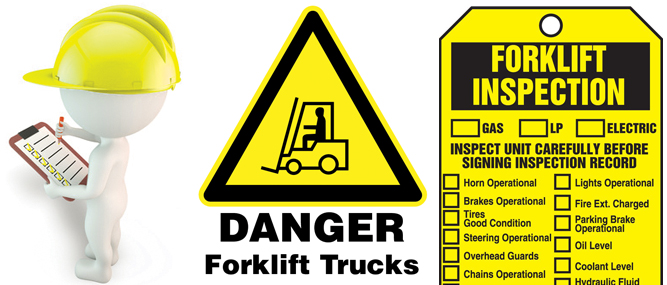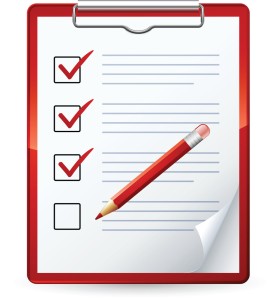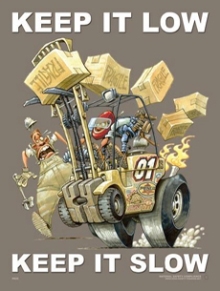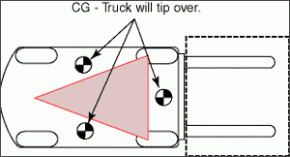Consider this – cars need oil changes and tires aligned on a regular basis to ensure reliability, safety, and efficiency. Much like cars, forklifts need to be regularly maintained and can be done with a Planned Maintenance schedule. Not only will Planned Maintenance help extend the life of your forklift, it will decrease downtime, increase productivity and increase efficiency. During a Planned Maintenance appointment safety features are checked thoroughly, parts lubricated, fluids leveled, and much more. Facilities and operators rely on forklifts for daily operations, therefore, having even one machine down could be detrimental to the days success.
In August of 2013 a man from Macon County, North Carolina died from CO (Carbon Monoxide) emissions. The North Carolina division of Occupational Safety and Health determined the CO was being emitted by a liquid propane gas powered forklift. It was emitting such high levels of CO that people outside the facility could have been exposed. Performing preventive maintenance would have caught the leak, and may have prevented this tragic loss of life. In material handling, safety is the number one concern for companies and operators.
The type of planned maintenance your forklift needs depends on the type of machine you have. There are gas and propane units as well as electric.

Here is where the NEW – yet old faithful – forklift safety tips come into play…
Forklift maintenance and safety is key, however at Southeast Industrial Equipment we also believe that training the operator of your forklift is just as important. If not more. When your warehouse, distribution center, or facility is poorly lite, loud, and/or has narrow aisles you need highly trained operators to keep the entire operation as safe as possible. Here are some tips to keep everyone from your operators, to pedestrians in and around the forklifts safe at all times.
- Be aware of your surroundings
- Additional safety lights should be added to your forklift for greater visibility and pedestrian awareness.
- Utilizing the forklift back-up alarms and horns to let everyone around you know you are approaching.
- Being space-conscious when working in and around narrow aisles whether your operators are working side by side on different lift trucks or they are around customers in facility.
- Utilizing Forklift and Fleet Management Technology
- T-Matics is Toyota’s Fleet Management system that can measure and manage accountability of your operators as well as the damages done to your machines. Keeping costs down and safety at the tip of the spear.
- The customization options for forklifts are endless. To keep individuals off the machines that should not be on them technology can added to our forklifts to keep the lift from starting if it is not the operator that drives that specific piece of equipment.
- Knowing the Correct Forklift Capacities and Sticking to the PM Schedules
- In demanding situations it is easy to disregard the forklift lifting capacity. Not only is it unsafe for everyone around the unit, it is unsafe for the operator because of instability.
- Recognizing necessary repairs and sticking to a Planned Maintenance schedule will help increase safety and decrease accidents in the workplace.
- Choosing Safe Everyday Practices
- Eliminating slip, trip, and fall hazards so that pedestrians and equipment can maneuver around the facility with ease.
- Having associates and operators wear appropriate clothing such as, reflective vests or steel toe boots can immensely increase safety in a facility.
- Only Trained and Certified Operators Operating the Forklifts
- By-pass OSHA and other fines by training operators for the specific forklift they will be operating. Maneuvering a sit-down counterbalance forklift is much different than a stand-up order picker or man-up lift. We offer Train-the-Trainer courses, safety training, and on-site operator training, as well as, many other programs. OSHA requires it and SIE offers it!
President and CEO of Toyota Material Handling North America, Brett Wood, predicts how important safety is and will be in the future of the material handling industry:
“[…] safety design, ergonomic design, productivity factors. If you combine those three together, together they work together in the forklift of the future. If you have a safe, comfortable operator you have a productive operator[…]” – Brett Wood President/CEO Toyota Material Handling North America
… According to Toyota Industrial Equipment no matter what type of lift truck you have, you need to have the following preventive measures taken:
- Ask for Operator concerns/input
- Clean Machine
- Clean Grease Fillings and Lubricate
- Check Upright Assembly
- Check Parking Brake Operation
- Check Service Brake Operation
- Check/Fill Master Cylinder
- Inspect Brake Pedal Linkage
- Inspect Hydraulic Cylinders and Hoses
- Check Tilt Cylinder Anchors
- Inspect tires
- Clean or replace hydraulic sump breather
- Check and lubricate shafts and levers
- Check steering for operation
- Check lights, horns, backup alarm and gauges
- Inspect data plate and decals
- Inspect safety seat belts and hood latch
- Visually inspect Load back rest and Overhead guard
- Check battery; add water and clean
- Check battery cables and receptacles
- Check/fill transmission/differential oil levels
- Check/fill hydraulic oil level.
- Check Fork Wear/Chain Wear/Carriage wear
Note: Some preventative maintenance items that are performed for specific types of lift trucks are not listed.
Southeast Industrial Equipment has maintenance programs to fit the needs of your lift truck. SIE is dedicated to help maintain the safety and performance of your facilities forklifts. For more information please call us (866) 696-9125 or visit our website at www.sielift.com.
Parker, Brittney. “Forklift ruled likely cause of farm tragedy.” Macon County News 08 08 2013, n. pag. Web. 14 Jan. 2014.
“Forklift Planned Maintenance.” Toyota-Lift of Minnesota. N.p.. Web. 15 Jan 2014. link to article.




